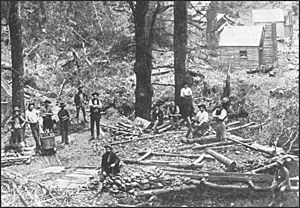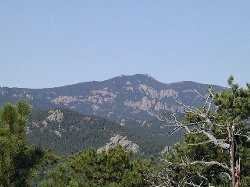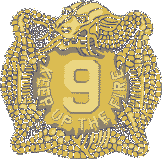William L. Carpenter facts for kids
Quick facts for kids
William Lewis Carpenter
|
|
|---|---|
| Born | January 13, 1844 |
| Died | July 10, 1898 (aged 54) Madison Barracks, Jefferson County, New York, US
|
| Years active | 1861–1898 |
| Known for | U.S. Army Officer, naturalist and geologist |
William Lewis Carpenter was born on January 13, 1844, in Dunkirk, New York. He passed away on July 10, 1898, in Madison Barracks, New York. Carpenter was an officer in the U.S. Army. He was also a naturalist, meaning he studied nature, and a geologist, who studies the Earth's rocks and minerals. He played a key role in exploring the Black Hills of South Dakota. His work helped document the area's natural resources. This work, though not planned to, contributed to events that led to the Great Sioux War of 1876.
Early Military Service
William Carpenter began his military career during the American Civil War. From 1861 to 1864, he served as a Midshipman in the U.S. Navy. He wanted to be more involved in the fighting. So, he left the Navy and joined the Army.
He became a private in the 2nd Artillery on July 29, 1864. He later transferred to a different battery. Carpenter fought in important battles, including the Siege of Petersburg, Virginia. He also served with the famous Army of the Potomac. He was promoted to Corporal in 1866 and Sergeant in 1867.
After writing several scientific articles, he was made a Second Lieutenant in the U.S. Army on April 5, 1867. He was assigned to the 9th Infantry Regiment. The Army encouraged him to continue his scientific studies while serving on the frontier.
Exploring the Black Hills
From 1872 to 1874, Lieutenant Carpenter was part of the 9th Infantry Regiment. He wrote many reports about minerals, including gold, found in the Black Hills. These minerals were being taken by illegal miners. These miners were trespassing on land protected by the Fort Laramie Treaty of 1868.
Carpenter was promoted to First Lieutenant on December 31, 1873, for his "exceptional duties." His reports, along with others, led to Custer's 1874 Black Hills Expedition. This expedition explored the area from July to August 1874. Carpenter shared his knowledge with other scientists on the expedition, like George Bird Grinnell.
In 1875, Lieutenant Carpenter joined the Newton-Jenney Party. This was a scientific trip sponsored by the United States Geological Survey. Their goal was to map the Black Hills of South Dakota. Carpenter was praised for his "exceptional diligence and scientific assistance." He "contributed greatly" to the 1880 Black Hills Geological report.
In 1876, Carpenter took part in the Battle of the Rosebud in Montana. He was a First Lieutenant in Company G, 9th Infantry. In this battle, about 1,200 U.S. cavalrymen and 300 Crow and Shoshone warriors fought against about 1,500 Sioux and Cheyenne warriors led by Chief Crazy Horse.
In 1877, Lieutenant Carpenter wrote his final report on the "Geology and Natural History of the Big Horn Mountains." This report explained the economic reasons for the gold rush in the Black Hills from 1873 to 1877. It was very well received by scientists. Because of his work, William L. Carpenter was elected a "Fellow" of the American Association for the Advancement of Science in 1877.
In 1880, he was listed in the U.S. census as a soldier in Nebraska. By 1882, he was an officer at Fort Niobrara. His later duties continued to involve collecting scientific samples and making observations.
Later Career and Personal Life
Carpenter was promoted to Captain in 1887. After 37 years of service, including the Civil War and Indian Wars, the 9th Infantry Regiment was moved to Madison Barracks, New York, for regular duty in 1892.
Captain Carpenter was appointed to serve on an Army court-martial in 1894. The official history of the 9th Infantry mentions his long and honorable service many times.
William Lewis Carpenter was the only son of William Lewis Carpenter (Senior) and Mamie Frances Bristol. His family came from England.
On March 12, 1878, Carpenter married Ann Curtis Steever. They had one son, Marsh Steever Carpenter, born in 1883. In 1897, Carpenter joined the Sons of the American Revolution in Washington, D.C.
He passed away from an illness on July 10, 1898, at Madison Barracks. After his death, his wife, Ann, became the postmistress at Fort Myer, Virginia, in 1899. William and Ann Carpenter are buried together in Arlington National Cemetery.





